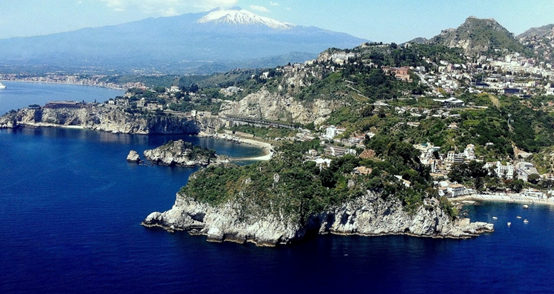
Date: June 17-22, 2017
Venue: Taormina, Italy
Invitation: The role of sediment in aquatic systems has attracted increasing attention in the last few decades from both an applied and a research perspective. Sediments act as both a pollutant in natural habitats as well as a vector for the transfer of chemicals such as nutrients and contaminants. Recognition of the environmental influence of both sediment and sediment-associated chemical (nutrients and contaminants) transfers and storage on aquatic ecosystems has generated much concern within both research and regulatory agencies. Studies have been undertaken by a variety of individuals in a wide range of disciplines as the environmental problems are found in rivers, lakes, wetlands, estuaries and oceans and affect the biological, chemical, physical and social components of the system.
The International Association for Sediment Water Science (IASWS), bringing together a wide range of researchers from different disciplines, seeks to promote, encourage and recognize excellence in scientific research related to sediments and their interactions with water and biota in fluvial, lacustrine and marine systems and with particular reference to problems of environmental concern.
The symposium that began in Amsterdam, Netherlands (1976) has continued on a three-year cycle, meeting in Canada (1981), Switzerland (1984), Australia (1987), Sweden (1990), U.S. (1993), Italy (1996), China (1999), Canada (2002), Slovenia (2005), Australia (2008), England (2011) and South Africa (2014). These tri-annual symposiums provide a forum for interdisciplinary discussions with the aim of better integrating knowledge of the biological, physical and chemical processes between sediments and water. The scale of the meeting is such that the exchange of ideas, techniques and approaches is fostered encouraging this integration and enabling future collaboration.
We invite you to participate in this conference. We hope that your attendance at the 14th International Symposium on the Interactions between Sediments and Water will be interesting and enjoyable for you, both scientifically and socially, and that you will enjoy your stay in Taormina.
Paolo Porto & Vito Ferro, Conference Chairs, Local organising Committee, IASWS 2017
IASWS 2017 website: http://www.iasws2017.altervista.org/
Deadline for abstract submission is August 15th 2016.
The selected papers presented in the conference will be published in a special issue of “Journal of Soils and Sediments”.
Contact: Prof. Paolo Porto
Conference Chair
Department of Agraria
University Mediterranea of Reggio Calabria
paolo.porto@unirc.it
KEY THEMES OF THE CONFERENCE
During the IASWS 2017 the following main topics will be addressed:
Theme A: Assessing and/or Restoring Disturbed Watersheds
Sediment Related Risk Assessment
Fine Particle Behavior
Sediment Geochemistry
Disturbed Catchments: Modelling and Measurement
Organic Matter and Particle Behavior
Contaminant fluxes and storage in disturbed systems
Sediment fluxes in natural and disturbed systems
Managing sediment quality/remediation of sediments
Catchment research platforms and management policy
Contaminant and nutrient behaviour in disturbed systems
Impact of wildfires on water ecosystems
Theme B: Sediment-Water Linkages in Terrestrial and Aquatic Environments
Sediment Budgets: Catchment Transfers
Sediment Budgets: Supply and Storage
Floodplain Sediment Storage
Sediment Associated Contaminant Transfers
Sediment Associated Nutrient Transfers
Sediment Transport
Soil Erosion
Monitoring/modelling sediment yields at multiple scales
Use of tracer technologies in sediment-water science
Dynamics of fine cohesive sediments
Theme C: Evaluating Change in Saline and/or Freshwater Habitats
Bio-Sediment Interactions
Sediment Associated Contaminants
Sediment Dynamics in Aquatic Systems
Hydrodynamic Effects on Sediment Processes
Paleo-sediment Approach
Sediment reconstruction, contaminants
Wood and fluvial ecosystems
Effect of wood on sediment structure and sorting
Theme D: Developments in monitoring and measuring sediment-water interactions and dynamics
Theme E: The role of sediment within catchment, river basin and coastal management

